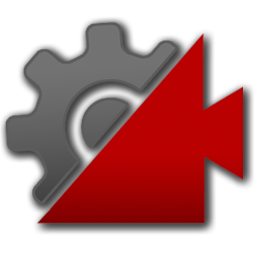Cinemachine
 | CinemachineTrackedDolly Class |
A Cinemachine Virtual Camera Body component that constrains camera motion
to a CinemachinePath. The camera can move along the path.
This behaviour can operate in two modes: manual positioning, and Auto-Dolly positioning.
In Manual mode, the camera's position is specified by animating the Path Position field.
In Auto-Dolly mode, the Path Position field is animated automatically every frame by finding
the position on the path that's closest to the virtual camera's Follow target.
 Inheritance Hierarchy
Inheritance HierarchySystemObject Object
Component
Behaviour
MonoBehaviour
CinemachineCinemachineComponentBase
CinemachineCinemachineTrackedDolly
Component
Behaviour
MonoBehaviour
CinemachineCinemachineComponentBase
CinemachineCinemachineTrackedDolly
Namespace: Cinemachine
Assembly: Cinemachine (in Cinemachine.dll) Version: 2.0.0.0 (2.0.0.0)
 Syntax
Syntax[DocumentationSortingAttribute(7f, DocumentationSortingAttributeLevel.UserRef)] [AddComponentMenu("")] [RequireComponent(typeof(CinemachinePipeline))] [SaveDuringPlayAttribute] public class CinemachineTrackedDolly : CinemachineComponentBase
Cinemachine.CinemachineTrackedDolly = function(); Type.createClass( 'Cinemachine.CinemachineTrackedDolly', Cinemachine.CinemachineComponentBase);
The CinemachineTrackedDolly type exposes the following members.
 Constructors
Constructors| Name | Description | |
|---|---|---|
 | CinemachineTrackedDolly |
 Properties
Properties| Name | Description | |
|---|---|---|
 | FollowTarget | Returns the owner vcam's Follow target. (Inherited from CinemachineComponentBase.) |
 | IsValid | True if component is enabled and has a path (Overrides CinemachineComponentBaseIsValid.) |
 | LookAtTarget | Returns the owner vcam's LookAt target. (Inherited from CinemachineComponentBase.) |
 | Stage | Get the Cinemachine Pipeline stage that this component implements.
Always returns the Body stage (Overrides CinemachineComponentBaseStage.) |
 | VcamState | Returns the owner vcam's CameraState. (Inherited from CinemachineComponentBase.) |
 | VirtualCamera | Get the associated CinemachineVirtualCameraBase (Inherited from CinemachineComponentBase.) |
 Methods
Methods| Name | Description | |
|---|---|---|
 | MutateCameraState | Positions the virtual camera according to the transposer rules. (Overrides CinemachineComponentBaseMutateCameraState(CameraState, Single).) |
 | OnPositionDragged | API for the editor, to process a position drag from the user.
This implementation adds the delta to the follow offset. (Overrides CinemachineComponentBaseOnPositionDragged(Vector3).) |
 Fields
Fields| Name | Description | |
|---|---|---|
 | m_AutoDolly | Controls how automatic dollying occurs |
 | m_CameraUp | How to set the virtual camera's Up vector. This will affect the screen composition. |
 | m_Path | The path to which the camera will be constrained. This must be non-null. |
 | m_PathOffset | Where to put the camera realtive to the path postion. X is perpendicular to the path, Y is up, and Z is parallel to the path. |
 | m_PathPosition | The position along the path at which the camera will be placed.
This can be animated directly, or set automatically by the Auto-Dolly feature
to get as close as possible to the Follow target. |
 | m_PitchDamping | "How aggressively the camera tries to track the target rotation's X angle.
Small numbers are more responsive. Larger numbers give a more heavy slowly responding camera. |
 | m_PositionUnits | How to interpret the Path Position |
 | m_RollDamping | How aggressively the camera tries to track the target rotation's Z angle.
Small numbers are more responsive. Larger numbers give a more heavy slowly responding camera. |
 | m_XDamping | How aggressively the camera tries to maintain the offset perpendicular to the path.
Small numbers are more responsive, rapidly translating the camera to keep the target's
x-axis offset. Larger numbers give a more heavy slowly responding camera.
Using different settings per axis can yield a wide range of camera behaviors |
 | m_YawDamping | How aggressively the camera tries to track the target rotation's Y angle.
Small numbers are more responsive. Larger numbers give a more heavy slowly responding camera. |
 | m_YDamping | How aggressively the camera tries to maintain the offset in the path-local up direction.
Small numbers are more responsive, rapidly translating the camera to keep the target's
y-axis offset. Larger numbers give a more heavy slowly responding camera.
Using different settings per axis can yield a wide range of camera behaviors |
 | m_ZDamping | How aggressively the camera tries to maintain the offset parallel to the path.
Small numbers are more responsive, rapidly translating the camera to keep the
target's z-axis offset. Larger numbers give a more heavy slowly responding camera.
Using different settings per axis can yield a wide range of camera behaviors |
 See Also
See Also